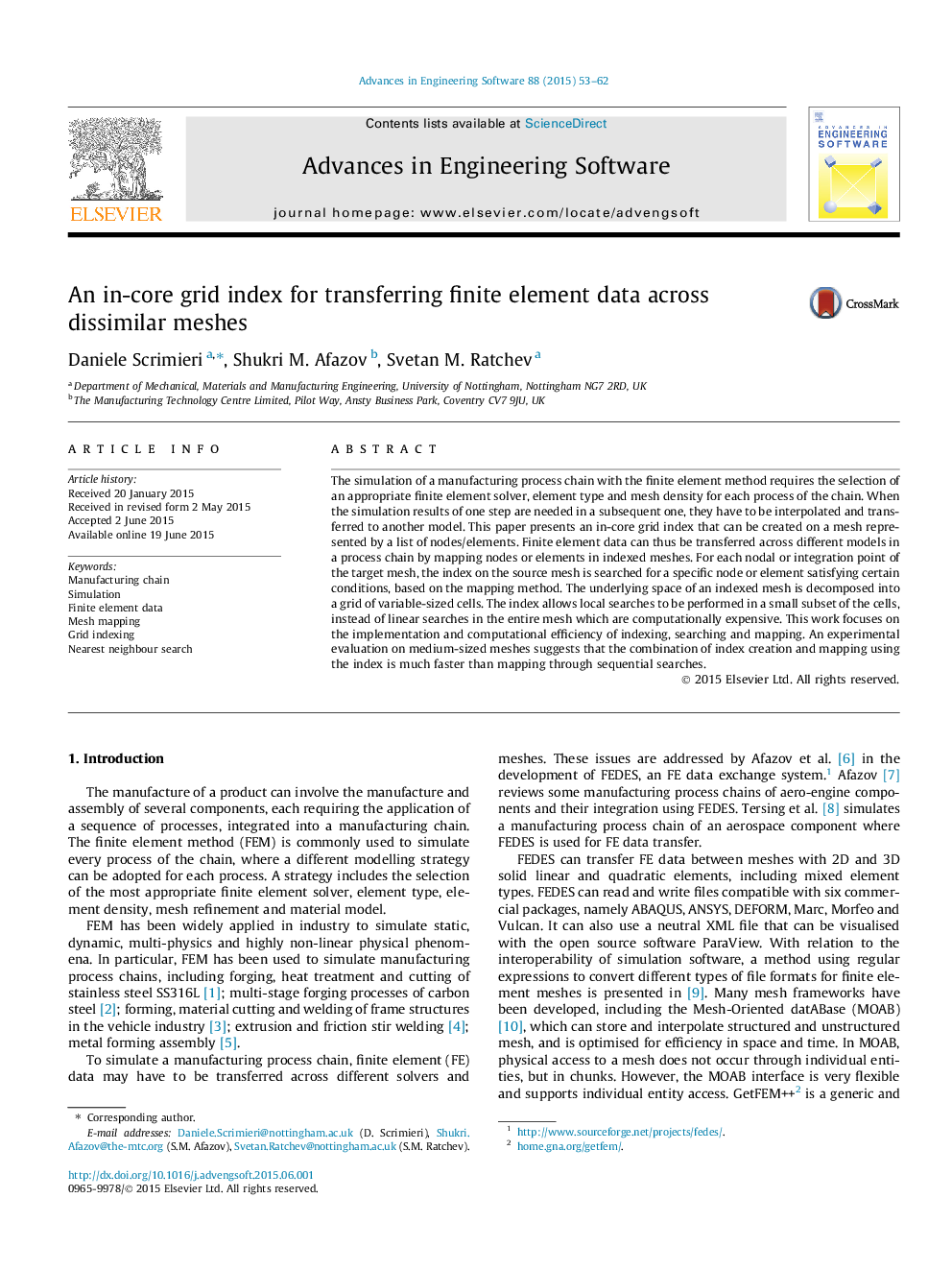| Article ID | Journal | Published Year | Pages | File Type |
|---|---|---|---|---|
| 567961 | Advances in Engineering Software | 2015 | 10 Pages |
•An indexing technique for mapping finite element data is presented.•The underlying space of an indexed mesh is decomposed into variable-sized cells.•Creation of an index and search for nodes and elements are fast.•An experimental evaluation of mapping techniques using the index is conducted.•The algorithms have been implemented in FEDES (Finite Element Data Exchange System).
The simulation of a manufacturing process chain with the finite element method requires the selection of an appropriate finite element solver, element type and mesh density for each process of the chain. When the simulation results of one step are needed in a subsequent one, they have to be interpolated and transferred to another model. This paper presents an in-core grid index that can be created on a mesh represented by a list of nodes/elements. Finite element data can thus be transferred across different models in a process chain by mapping nodes or elements in indexed meshes. For each nodal or integration point of the target mesh, the index on the source mesh is searched for a specific node or element satisfying certain conditions, based on the mapping method. The underlying space of an indexed mesh is decomposed into a grid of variable-sized cells. The index allows local searches to be performed in a small subset of the cells, instead of linear searches in the entire mesh which are computationally expensive. This work focuses on the implementation and computational efficiency of indexing, searching and mapping. An experimental evaluation on medium-sized meshes suggests that the combination of index creation and mapping using the index is much faster than mapping through sequential searches.
